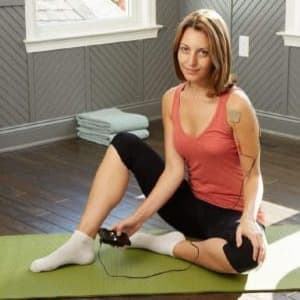Let’s clear the air right at the onset; while staying home is safe, seeking treatment at home with modern medical-care equipment doesn’t automatically make therapy safe. Yes, it is quite possible that the off-the-shelf product that your close confidant recommended may not have been approved for safe use at home by any regulatory authority. Yet, when the pain in your knee or lower back gets unbearable and your trusted doctor isn’t available, you will reach for the next best thing that can provide relief.
Living with orthopaedic pains (knee pains, joint pains, hip-pains and muscle pains) has become a common occurrence owing to long work hours and never-ending commute times. A patient who is already suffering may find it difficult to visit medical facilities or treatment centres every other day. Finding the right doctor and fixing an appointment for a suitable hour may be another hurdle to cross.
More and more people are now opting for healthcare options which include medical products and equipment that can be used at home without having to travel to far-flung medical centres for treatment. Increasingly being recognised and recommended by doctors, these devices come with instruction manuals which make it very convenient to undergo a session of therapy without any help or supervision.
Innovation in home-medical devices is capturing the market as much as it is capturing the imagination of patients as well as medical practitioners. New products are being introduced and sold – some even over the counter – faster than ever. As such, consumers need to be discerning. It takes months if not years of research and development before a model of medical equipment is released for purchase. A good product goes through rigorous testing and approvals before reaching stores and other distribution channels.
To safeguard consumers, the FDA (Food and Drug Administration) in the United States of America, which is also the international standard for all public health-related matters, has instituted stringent approval mechanisms for any healthcare device available on the market.
Being the custodian of consumers, the FDA goes to great lengths to scrutinize every product thoroughly before it is marked safe for use. Electrical parts and accessories are checked and tested. Even the product manual, the one which consumers generally do not read but most definitely should, is carefully examined for any contradictions which may potentially harm the user. All labels on the packaging and the product itself are thoroughly inspected to ensure they don’t mislead the user. For approval purposes, these devices are considered the same as any medicine and vaccine. Therefore, the testing and validation of these devices and the accompanying technology is put through the same rigor as are medicines.
Once certified, the FDA medical equipment is safe to use and poses no health hazards. Therefore, a misplaced electrode on a product, say Stimtec-2, may not treat the condition but it will assuredly not cause any harm to the body. The same cannot be said for devices that have not passed through similar quality checks.
With modern technology, medical gadgets and devices, one can seek professional treatment from the comfort of home. Says Nisha Johari (Managing Director), and spokesperson for one of the leading med-tech equipment manufacturers in the world, “with the proliferation of home-use medical devices, it is important to be aware that these gadgets must be selected with care and are not a substitute but an extension of professional medical treatment. By keeping the user at the centre of the design process, we have been able to develop products which are simple to set up, easy to use and very effective in bringing relief to those who need it most.”
For the latest updates on the advancements in technology in the healthcare industry, visit our Technologies section.

